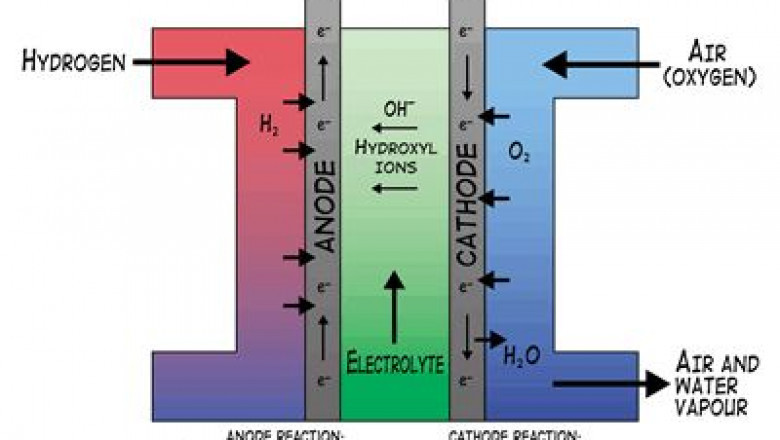views
Alkaline fuel cells (AFCs) operate using an electrochemical reaction similar to other fuel cells, but with some key differences that provide advantages over other technologies. AFCs use an alkaline electrolyte instead of an acidic one, allowing them to operate at lower temperatures and pressures than technologies like proton exchange membrane fuel cells.
The History and Development of AFCs
Some of the earliest fuel cell technologies developed were Alkaline Fuel Cells, with the technology dating back to the 1950s and 1960s. During this time, AFCs were used to power NASA space programs including the Apollo missions to the moon. Major companies like Pratt & Whitney, United Technologies and General Electric invested heavily in researching AFCs. By the 1970s, improvements were allowing AFCs to reach higher power densities and efficiencies. AFC development continued through the 1980s, focusing on reducing cost and improving performance.
How Alkaline Fuel Cells Work
AFCs use an alkaline electrolyte, such as a concentrated potassium hydroxide solution, to conduct hydroxide ions from the cathode to the anode. At the anode, hydrogen fuel is oxidized which produces electrons and hydroxide ions. The electrons then flow through an external circuit, producing direct current electricity. At the cathode, oxygen or air reacts with the hydroxide ions and electrons to form water. This electrochemical reaction releases energy which can be harnessed as electric power. The alkaline electrolyte allows AFCs to operate around normal room temperatures of 60-90°C, lower than other fuel cell technologies.
Advantages of the AFC Design
One of the main advantages of AFCs is their ability to operate at lower temperatures compared to other technologies like PEM fuel cells. The lower operating temperatures allow for less complex components and help reduce costs. AFCs are also more robust and less sensitive to carbon monoxide poisoning from impure hydrogen fuels. They can even use non-precious metal catalysts like nickel to facilitate the electrochemical reactions. AFCs also exhibit long-term operational stability and can have increased power outputs at higher current densities compared to PEM fuel cells.
Applications for Alkaline Fuel Cell Technology
While AFC technology had success powering NASA space missions decades ago, several new applications are being developed and targeted today. Portable and backup power products are an area of focus, including applications like battery chargers, uninterruptible power supplies, and specialized portable power for industrial uses. Military equipment could also benefit from AFCs ability to deliver quiet, emissions-free power in remote or sensitive areas. Fuel cell electric vehicles are another promising application that automakers are researching, taking advantage of AFCs wider operating temperature window and fuel flexibility compared to PEM fuel cells commonly used in vehicles today. With further innovation, AFCs may emerge as a viable option for stationary power generation and other large-scale deployment as costs continue falling.
Ongoing Development Efforts
While AFC technology has existed since the mid-20th century, ongoing research and development work aims to improve performance, reduce costs, and address challenges that have so far prevented widespread commercialization. Areas of focus include developing advanced alkaline electrolyte formulations for improved ion conductivity, durability, and material compatibility. Engineers are also working on optimized catalysts and electrode designs for higher power densities and lower over potentials. Improving water and thermal management is important, as is addressing carbonation issues from prolonged CO2 exposure. Demonstration projects and technology validation programs are helping prove AFC potential for real-world applications. With continued progress, alkaline fuel cells could emerge as a compelling alternative to lithium-ion batteries and other technologies in future years.
Concluding Thoughts
Alkaline fuel cell technology originated in the 1950s and successfully powered NASA space programs. While other fuel cell types have received more attention since, AFCs retain key advantages over competing technologies. Ongoing development work aims to address past challenges and realize the full potential of this promising electrochemical platform. With lowered costs and improved performance, alkaline fuel cells may emerge as compelling solutions for portable power, transportation, backup power systems and other applications in need of efficient, emission-free energy. Though further progress is still needed, the future appears bright for this long-standing fuel cell technology.
Get this Report in Japanese Language:
Get this Report in Korean Language:
About Author:
Money Singh is a seasoned content writer with over four years of experience in the market research sector. Her expertise spans various industries, including food and beverages, biotechnology, chemical and materials, defense and aerospace, consumer goods, etc. (https://www.linkedin.com/in/money-singh-590844163)






















Comments
0 comment